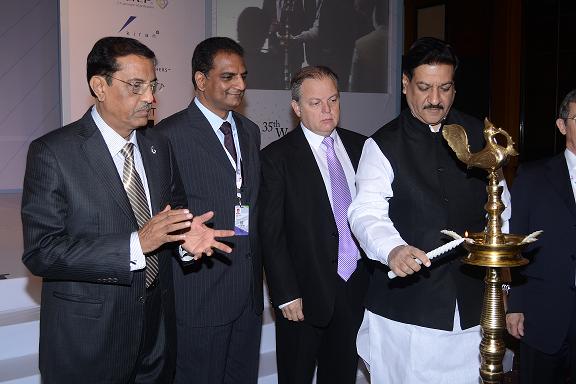Alrosa, the world’s second largest diamond miner, plucked out a stone weighing 158.2 carats from its Nyurbinsk
mine in Russia’s north-eastern republic of Sakha (Yakutia). That is a
quite remarkable size; at auction that is worth about $1.5m, and by the
time it has been cut and polished it will be worth a great deal more.
In fact, Alrosa produces 97% of all diamonds in Russia and accounts
for about 28% of global production. It is a name you could soon be
hearing a lot more of as it is rumoured to be preparing a stock market
flotation.
That would cast the spotlight on the diamond mining industry. There
is an air of optimism about the future of this sought after precious
stone, as I discovered when I met Robert Bouquet, a director of diamond
mining junior Botswana Diamonds .
Only 1% of Sites Turn Out Commercially Viable Diamonds
Botswana Diamonds has projects in Botswana, Cameroon and,
potentially, Zimbabwe, a political hotbed but a country that hosts the
extraordinarily rich Marange diamond mine. Bouquet was excited about the
potential for the company, especially in Cameroon. But it was his
insight into the industry that interested me.
The price of rough diamonds has shot up in recent years and quickly
recovered from the financing crisis of 2009. Although, there was some
easing of the diamond price this [northern] summer, sentiment is still
bullish, and it is not hard to see why.
Diamonds are exceptionally difficult to find. Although there are some
alluvial sources, washed downstream by ancient rivers, 95% of diamonds
have erupted from deep in the earth’s crust and are found in vertical
pipes known as kimberlites or, occasionally, lamproites.
The location of these kimberlites is known, but they do not
necessarily yield diamond mines. Only about 1% of kimberlites discovered
to date have proved to be commercially viable, so with this low success
rate and a finite number of kimberlites left to explore, there is no
chance of a sudden increase in supply.
A Supply Crunch is on the Way for Diamonds
Global production of diamonds amounted to 124 million carats in 2011,
and according to a report by Bain, 13 new mines will add 23 million
carats by 2012. Balancing this against the depletion of existing mines,
aggregate diamond production is forecast to increase by 2.8% a year to
2020. But that figure is not sufficient to match forecast demand.
Although the USA remains the largest market for diamonds, the rapid
growth of the Chinese and Indian middle classes is expected to have the
biggest impact on the equation.
In these two countries the number of households with a disposable
income of $15,000 is expected to rise to about 469 million in 2020 from
about 220 million today.
That seems certain to boost demand for diamonds, and since consumers
have a tendency to equate price with worth, rising prices could lead
them to value diamonds even more highly than they do today.
The Trouble with Diamonds
And yet the diamond market is a strange one. Thanks to the efforts of
De Beers, which cornered the market at the beginning of the 20th
century, and came up with ‘diamonds are a girl’s best friend’, brides
and grooms all over the world are now convinced that their devotion
should be measured by this particular precious stone.
De Beers has now lost its stranglehold on the industry, and without a
sustained and consistent marketing campaign, future brides and grooms
could decide that emeralds, for instance, are no lesser tokens of love.
Also having an effect on the supply of diamonds is the Kimberley
Process which, in theory anyway, prevents the sale of ‘conflict
diamonds’ from financing brutal regimes. The other shadow hanging over
the industry is synthetic diamonds.
It is possible to make diamonds in a laboratory and, given that these
can only be identified by experts using advanced inspection tools, you
can be certain that they would hoodwink the average consumer.
While the trade has managed to convince itself that consumers would
not be satisfied with artificial diamonds, industrial users have no such
qualms, and 95% of industrial diamonds are synthetic.
Finally, the attraction of diamonds is that, like gold, they last for
ever. That means that every diamond that has ever been produced is
still in existence. To the extent to which owners choose to pluck their
grandmother’s diamond jewellery from the bottom drawer and flog it,
supply will be affected.
The bullish case for diamonds is not all it might seem. But even with these reservations, the industry looks well placed.










![[image]](http://si.wsj.net/public/resources/images/OB-UY875_WMJ101_DV_20121015171532.jpg)
 “This
is a proud moment indeed, as the congress, the most prestigious event
of the two international bodies, WFDB and IDMA, is being held in India
for the first time,” said Anoop Mehta, the president of the Bharat
Diamond Bourse (BDB).
“This
is a proud moment indeed, as the congress, the most prestigious event
of the two international bodies, WFDB and IDMA, is being held in India
for the first time,” said Anoop Mehta, the president of the Bharat
Diamond Bourse (BDB).











